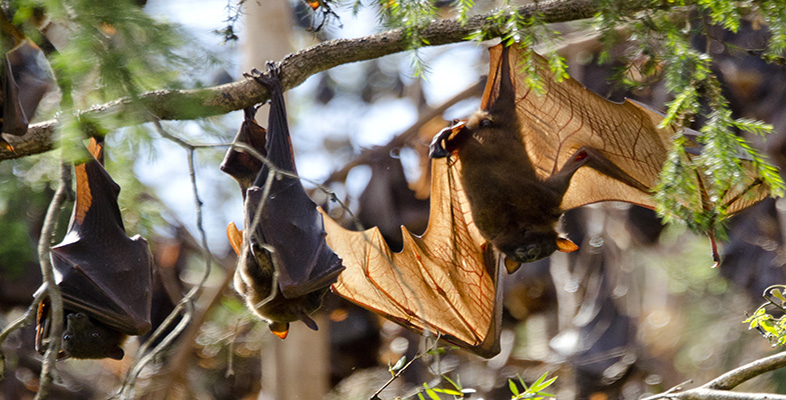6 Strategies for coping with cold and food shortage
6.1 Toughing it out
For small insectivorous mammals, the best solution to the problem of obtaining sufficient energy for their requirements, notably the maintenance of body temperature, is to feed continuously. But in temperate regions, insect eaters have to cope with shortage of insects during cold winters. In Section 6 I want to focus on two strategies that insect eaters use to cope with problems of overwintering.
When talking about the giant anteater, the TV programme commentary claims that these animals are short of food all the time, because their diet of termites is not very nutritious.
Activity 7
Look back at the notes you made on the giant anteater sequence in Activity 4 (TV programme 22.40-26.54 ) and explain how the giant anteater reduces its energy expenditure.
Answer
Giant anteaters spend much of their time sleeping ('asleep for 15 out of 24 hours'), during which they cut down loss of heat by covering their body with their long bushy tail. Giant anteaters maintain a lower body temperature (just 32 °C) than most other mammals, so they do not need to use so much of the energy released from food breakdown for maintaining body temperature.
Shrews do not have a coat of long fur and they have a high metabolic rate (Figure 6), maintaining a Tb of 37 °C. The insects that shrews eat (mostly found in the leaf litter) are often not hugely depleted during the winter but, as you'd expect, shrews are less active over this period, compared to the summer bonanza. Indeed, shrews may undergo brief periods of torpor in winter. Torpor is a state of lethargy during which the animal allows its body temperature to drop.
Torpor lasts for short periods only, either at night or during the day. As the torpid animal is not using energy to maintain its normal high level of activity or high body temperature, significant amounts of energy are saved. Savi's pygmy shrew becomes torpid at low temperatures. Researchers measured a Tb of just 12 °C for Savi's pygmy shrews during torpor at Ta of 4 °C, compared to Tb of 36 °C during normal activity. Heart rate was just 100 beats per minute during torpor, compared to 800-1200 per minute during normal activity. A more profound adjustment to winter shortages would be to enter true hibernation, when Tb would fall dramatically. And yet no shrew hibernates - why not, when 'opting' out would be presumably so advantageous?
